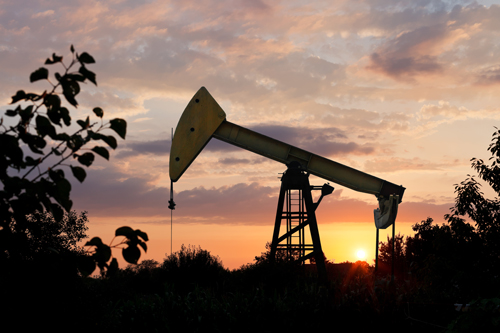
John Woodside,
Local Journalism Initiative Reporter
Economic uncertainty may be building as the threat of a full-blown trade war ramps up, but an analysis of Canadian oil and gas companies’ spending plans paints a picture of an industry that remains extremely confident in the future of fossil fuels.
Over the next decade, just over 180 oil and gas companies in Canada plan to collectively spend more than $600 billion developing new oil and gas fields, according to data reviewed by Canada’s National Observer.
The towering sum does not include spending on existing oil and gas fields, or those already under development. It can also be specifically broken down into three categories: capital expenditures ($342 billion), exploration spending ($22.7 billion), and operational spending ($249 billion). The original amounts were recorded in U.S. dollars and converted to Canadian, so these are approximate figures.
The forecasted spending represents an increase from the previous decade, and annual investments in Canadian oil and gas production are expected to reach the highest levels ever recorded in the country in the early 2030s. The previous highest level of investment occurred around 2013 and 2014 during the fracking boom. The figures were originally sourced from the Rystad Database, and were included in the International Institute for Sustainable Development’s Carbon Minefields Newsletter.
Mark Kalegha, an energy finance analyst with the Institute for Energy Economics and Financial Analysis, said company forecasts that show increased spending indicates they “have a bullish view internally,” even if it goes against the grain of global energy forecasts from the authoritative International Energy Agency which expects global oil demand to peak by 2030.
One reason Canadian oil and gas companies may have high expectations over the next 10 years is that the country has only recently developed new markets for exports. The Trans Mountain expansion project became operational last year, and this summer LNG Canada is set to begin exporting gas from British Columbia to international markets, Kalegha said.
“Now that raises concerns,” he said, adding that while he believes private businesses have the right to increase investment to boost profits for shareholders, it’s crucial to face the reality that the oil and gas sector is the country’s largest and growing source of greenhouse gas emissions.
“So the concern is if this industry is going to ramp up production in a time where the government has made commitments to reduce those emissions, that’s a red flag,” he said.
According to government estimates, the oil and gas sector was responsible for 208 million tonnes of carbon pollution, roughly 30 per cent of the country’s total, in 2023 — the most recent year data is available.
Fossil fuel companies’ spending to increase the supply of oil and gas could be affected by the trade war with the United States. If oil and gas exports to the United States are curbed due to tariffs, it is unclear how companies would adjust their planned spending. However, U.S. President Donald Trump’s “drill, baby drill” agenda and increased talk from Canadian politicians about building new pipelines could encourage companies to invest more in oil and gas supplies.
Beyond increased emissions posing a severe risk to the climate, there are financial risks if a trade war unfolds as oil and gas production ramps up, said Kalegha. In the short term, if demand for Canadian oil and gas drops, where do companies expect to find buyers?
“Longer term, a lot of leading credit agencies, think tanks, market observers and researchers have noted there’s a general lack of preparedness for a low carbon future in the industry, and that exposes oil and gas [companies] to severe risks,” he said.
What helps to explain the gap between independent market forecasts and the planned spending put forward by oil and gas companies, is that to attract capital from investors, fossil fuel companies are incentivized to project a strong industry, Kalegha said. Even if executives might have personal reservations about the future of oil and gas demand when studying market forecasts, they “need to keep the market confident in their companies, so they need to project that bullish outlook,” he said.
“If you keep the ball rolling, keep the gravy train rolling, continue to enjoy your perks and your compensation, nobody wants that to stop,” he said.
According to the data, Tourmaline Oil is planning to spend approximately $60 billion over the next decade — the most of any company on the list, representing one-tenth of the total spending. About 80 per cent of the planned spending is aimed at developing new gas fields in Alberta and British Columbia.
Major oilsands companies formed the Pathways Alliance in 2021 to collaborate on building a major, $16 billion carbon capture and storage project to lower emissions, but four years later have not even confirmed they intend to build it — let alone put shovels in the ground. Instead, the group (which includes Suncor, Imperial, Canadian Natural Resources, MEG Energy, ConocoPhillips Canada, and Cenovus) has been lobbying for more government subsidies to build it despite the project’s economics being challenged by experts.
Over the next decade, Pathways Alliance companies are planning to spend more than $50 billion developing and exploring for new oil and gas fields.
Planning to spend more than $50 billion boosting the supply of fossil fuels, while putting off a decision to spend $16 billion on carbon capture, “speaks to the level of priority that’s been given to decarbonization efforts,” Kalegha said.
The Pathways Alliance, and its member companies, did not return a request for comment.
Aaron Cosbey, a development economist and senior associate with the International Institute for Sustainable Development (IISD), said as long as government subsidies aren’t being given to oil and gas companies it’s up to them to decide how to invest their money.
“Until we have regulatory control over supply then I guess they can go fill their boots and we’ll find out who was right about projections of future demand,” he said, acknowledging his “glib” response. “But here’s my concern, the more you expand that sector the more you set it up for a sector in distress when demand goes sour.”
In a scenario where oil and gas companies go bust as demand evaporates, Cosbey said it’s not easy for government officials to let them collapse for a handful of reasons. First, those firms would look for government support to stay solvent. Second, they would likely advocate for relaxed environmental regulations to help stay in business. Third, millions of Canadians have savings tied up in mutual funds that “are overexposed to the oil and gas sector.” And finally, if companies go belly up, workers and dependent communities will be severely impacted, he said.
In its dying days, the federal government is, at least in theory, still developing a policy to cap emissions from the oil and gas sector. With the oil and gas pollution cap draft regulations unveiled in November, Environment and Climate Change Minister Steven Guilbeault previously said he’d hoped the department could finalize the rules by June.
With an election widely expected to soon be called, that policy is likely to die on the vine.
John Woodside,
Local Journalism Initiative Reporter
Canada’s National Observer

